62噸大樹,、大型類人猿……這些是2018十大新物種
|
62噸重的瀕危大樹、美國(guó)加州圣地亞哥水族館里發(fā)現(xiàn)的原生動(dòng)物,、瀕臨滅絕的大型類人猿,,這都是入選第11屆年度十大新物種榜單的神奇生物。 該榜單由紐約州立大學(xué)環(huán)境科學(xué)與林業(yè)科學(xué)學(xué)院旗下物種考察國(guó)際研究所(IISE)編制,,每年5月公布,,以紀(jì)念瑞典生物學(xué)家卡爾·馮·林奈的誕辰。林奈被譽(yù)為現(xiàn)代生物分類學(xué)之父,,加州大學(xué)伯克利分校表示,,“他對(duì)生物的命名、排序和分類系統(tǒng)至今仍在廣泛使用(有一些改進(jìn)),?!? 包括植物、細(xì)菌,、魚類和接近滅絕的哺乳動(dòng)物在內(nèi),,每年IISE評(píng)選的十大物種只是部分代表,由跨國(guó)甄選委員會(huì)從新物種之中挑選,。 “每年命名約1.8萬個(gè)(物種),,但估計(jì)每年至少有2萬個(gè)物種滅絕?!盜ISE的創(chuàng)始董事,、紐約州立大學(xué)環(huán)境科學(xué)與林業(yè)科學(xué)學(xué)院院長(zhǎng)昆汀·惠勒在聲明中表示。 惠勒稱:“有很多物種如果找不到,,及時(shí)命名并描述,,將永遠(yuǎn)不為人知。通過各種新物種我們才能明白到生態(tài)系統(tǒng)有多么復(fù)雜,,從中了解生物演化的具體情況,。面對(duì)生存競(jìng)爭(zhēng)、環(huán)境和氣候條件的不斷變化,,每個(gè)物種都在頑強(qiáng)生存,。由于人類也面臨充滿不確定的未來環(huán)境,可以通過這些例子學(xué)習(xí)一些經(jīng)驗(yàn),?!? 接下來,就讓我們來認(rèn)識(shí)一下今年的十大物種: |
An endangered 62-ton tree, a protist found in an aquarium in San Diego, an “imperiled” great ape: These are just three of the fascinating new species to make the 11th annual Top 10 New Species List. The list is compiled by the International Institute of Species Exploration, which is part of State University of New York’s College of Environmental Science and Forestry, and it is released in May each year to honor Carolus Linnaeus’s birthday. Linnaeus is known as the “Father of Taxonomy,” and according to the University of California, Berkeley, “his system for naming, ranking, and classifying organisms is still in wide use today (with many changes).” The top 10 organisms — plants, bacterium, fish, and even extinct mammals — are just a sampling of new species discovered, and they are chosen by members of an international selection committee. “We name about 18,000 [species] per year but we think at least 20,000 per year are going extinct,” Quentin Wheeler, ESF president and founding director of the IISE, said in a statement. “So many of these species — if we don’t find them, name them and describe them now — will be lost forever,” Wheeler continued. “And yet they can teach us so much about the intricacies of ecosystems and the details of evolutionary history. Each of them has found a way to survive against the odds of changing competition, climate and environmental conditions. So each can teach us something really worth knowing as we face an uncertain environmental future ourselves.” Here are the top 10 species: |
1. Ancoracysta twista
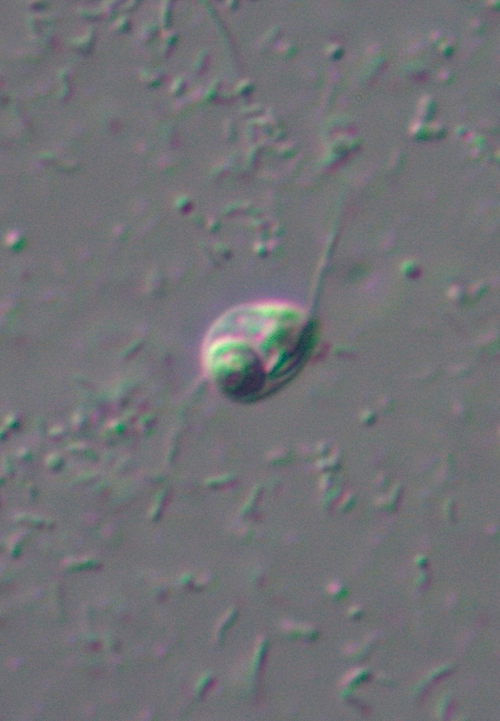
|
Ancoracysta twista是一種新發(fā)現(xiàn)的單細(xì)胞原生生物,發(fā)現(xiàn)地在圣地亞哥海洋研究所Scripps Institution of Oceanography的一個(gè)熱帶水族館,。目前尚不清楚起源何處,。 |
Ancoracysta twista is a new single-celled protist, which was discovered in a tropical aquarium at the Scripps Institution of Oceanography in San Diego, Calif. Its origins in the wild remain unknown. |
2. Dinizia jueirana-facao
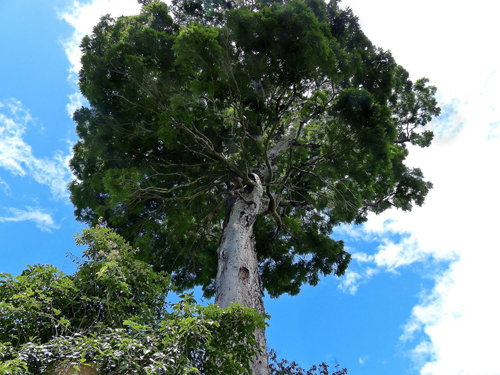
|
Dinizia jueirana-facao 在巴西發(fā)現(xiàn),,是極度瀕危的一種樹,。目前這種樹在全球只發(fā)現(xiàn)了25棵(其中一半都在保護(hù)區(qū)內(nèi)),,可以長(zhǎng)到130米高,,重約62噸,。 |
Dinizia jueirana-facao is a critically endangered tree that is found in Brazil. There are only 25 known trees (half of which are in a protected area). It can be up to 130 feet tall and weigh around 62 tons. |
3.Quasimodo側(cè)甲鉤蝦

|
可能你已經(jīng)猜到,,Epimeria quasimodo 得名于法國(guó)文豪維克多·雨果在《巴黎圣母院》中的駝背主人公卡西莫多,,因?yàn)橥瑯庸?。環(huán)境科學(xué)與林業(yè)科學(xué)學(xué)院稱,,這是南極洲海域新發(fā)現(xiàn)的26個(gè)側(cè)甲鉤蝦屬片腳類物種之一,。 |
As you may have guessed, Epimeria quasimodo was named after Victor Hugo’s hunchbacked character Quasimodo, because of its shape. According to ESF, it is one of “26 new species of amphipods of the genus Epimeria from the Southern Ocean.” |
4. Nymphister kronaueri

|
這種小甲蟲生活在哥斯達(dá)黎加,,16只疊在一起才有約2.5厘米長(zhǎng)。它們寄居在工蟻背上,,大小,、形狀和顏色都和工蟻的腹部相同,騎在工蟻背上旅行,。環(huán)境科學(xué)與林業(yè)科學(xué)學(xué)院發(fā)布的文章解釋說:“這種甲蟲利用口器抓住宿主腹部比較緊的表面然后掛住,,跟著螞蟻從一處移動(dòng)到另一處?!? |
These tiny beetles live in Costa Rica, and it would take 16 of them lined up to reach the length of an inch. They live amongst a species of worker ants and hitchhike on the back of the ants to travel — their bodies are the same size, shape and color of the ants’ abdomen. “The beetle uses its mouthparts to grab the skinny portion of the host abdomen and hang on, letting the ant do the walking as they move from place to place,” an ESF release explains. |
5.Pongo tapanuliensis
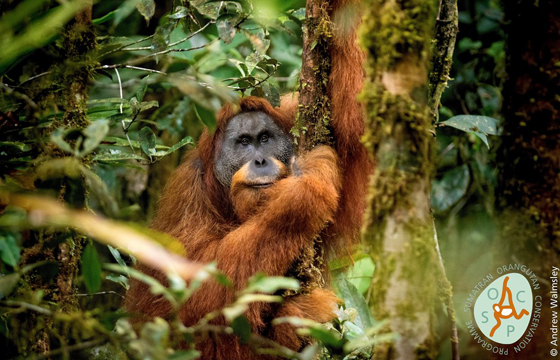
|
Pongo tapanuliensis又名tapanuli orangutan,是一種居住在蘇門答臘島的瀕危大型類人猿,,目前全球僅剩800只,。 |
Pongo tapanuliensis, or the tapanuli orangutan, is an endangered great ape that lives in Sumatra. There are only around 800 of them left. |
6.Pseudoliparis swirei
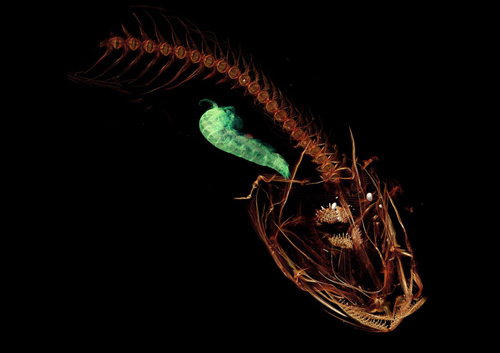
|
這種獅子魚生活在西太平洋馬里亞納海溝的最深處,身長(zhǎng)約0.1米,形狀像蝌蚪,,卻可能是附近海域的頭號(hào)捕獵者,。 |
The swire’s snailfish (Pseudoliparis swirei) lives in the deepest part of the ocean the Mariana Trench in the western Pacific Ocean, where this four-inch tadpole-shaped fish appears to be a top predator. |
7. Sciaphila sugimotoi
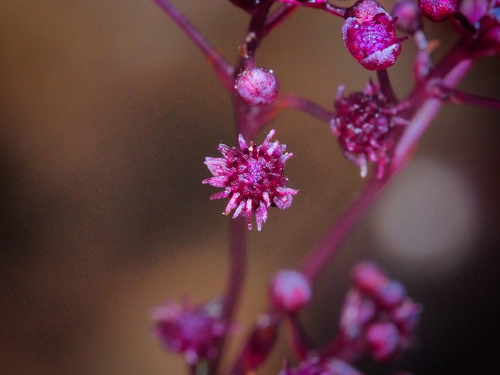
|
Sciaphila sugimotoi直徑0.1米,,在日本的石恒島上發(fā)現(xiàn),。和大多數(shù)通過光合作用維持生存的植物不同,Sciaphila sugimotoi是一種異養(yǎng)生物,,也就是說其養(yǎng)分來自其他生物,。環(huán)境科學(xué)與林業(yè)科學(xué)學(xué)院解釋說:“這種植物和一種真菌共生,雖然不斷吸取營(yíng)養(yǎng),,但不會(huì)造成傷害,。” |
This four-inch-high flower is found on Ishigaki Island in Japan. Unlike most plants, which sustain themselves through photosynthesis, Sciaphila sugimotoiis heterotrophic meaning it gets its nutrients from other organisms. “In this case, the plant is symbiotic with a fungus from which it derives nutrition without harm to the partner,” ESF explains. |
8. Thiolava veneris

|
2011年,,海底火山Tagoro出現(xiàn)在臨近加那利群島中耶羅島的海面上,三年后,,人們?cè)赥agoro發(fā)現(xiàn)了Thiolava veneris ,。環(huán)境科學(xué)與林業(yè)科學(xué)學(xué)院稱,這種變形菌門的生物“結(jié)構(gòu)類似頭發(fā),,由鞘層包裹一些細(xì)菌細(xì)胞構(gòu)成,。” |
Thiolava veneris was discovered three years after the submarine volcano Tagoro, located off the coast of El Hierro in the Canary Islands, erupted in 2011. This proteobacteria form “l(fā)ong, hair-like structures composed of bacterial cells within a sheath,” according to ESF. |
9.Wakaleo schouteni

|
和上榜的其他物種不同,科學(xué)家只在化石里找到了Wakeleo schouteni曾經(jīng)存在的證據(jù),。這種有袋類獅子生活在距今約2300萬年前的漸新世晚期,,棲息地在澳大利亞昆士蘭的西北部地區(qū)。 |
Unlike others on this list, scientists only have fossil evidence of the Wakeleo schouteni. Around 23 million years ago, during the late Oligocene era, this marsupial lion roamed in northwestern Queensland, Australia. |
10.麗穴盲步甲
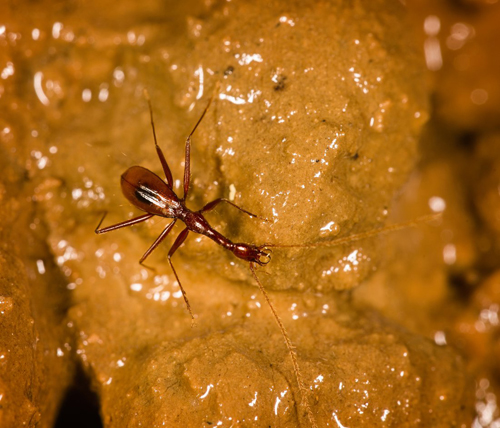
|
這種甲蟲能適應(yīng)黑暗的環(huán)境,,發(fā)現(xiàn)于廣西省都安瑤族自治縣的一個(gè)溶洞中。(財(cái)富中文網(wǎng)) 譯者:Pessy 審稿:夏林 |
This beetle is adapted to the darkness, and it was discovered in a cave in Du’an, Guangxi Province, China. |













